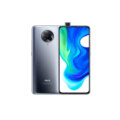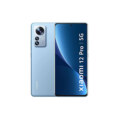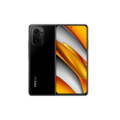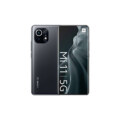Xiaomi Pad 6S Pro



Specs
General
| Device Type | Xiaomi Tab |
| Model | Pad 6S Pro |
| Announced | 22 February, 2024 |
| Status | Available |
Design
| Dimensions | 278.7 x 191.6 x 6.3 mm |
| Weight | 590 g |
| Protection |
Glass front (Gorilla Glass 5) Aluminum frame Aluminum back |
| Colors |
Black Blue Gold |
Display
| Refresh Rate | 30 Hz |
| Display Type Display Technology => A number of display technologies and types used in mobile phones => TFT (Thin Film Transistor), IPS (In-Place Switching), OLED (Organic Light Emitting Diode), AMOLED (Active-Matrix Organic Light-Emitting Diode), Super AMOLED (an even advanced version of AMOLED), Resistive Touchscreen (Resistive touchscreens contain two layer of conductive material with a very small gap between them which acts as a resistance), Capacitive Touchsceen (Capacitive touchscreen technology consists of a layer of glass coated with a transparent conductor) | IPS LCD |
| Size | 11.0 inches |
| Resolution | 1800 x 2880 pixels |
| Display Colors Display Colors is refers to the number of different shades of colors that the screen is capable of displaying => 64K colors, 256K colors and 16 million colors, Obviously 16M is highest available range of colors and better than others. | 68B colors |
| Pixel Density Pixel Density (PPI) is refers to the concentration of pixels on a particular display, measured in pixels per inch (ppi). Pixel density is calculated by dividing the diagonal pixel resolution of a display by its diagonal size, higher pixel density better display quality. | ~ 295 ppi |
| Touch Screen | Capacitive Touchscreen, Multi-touch |
| Display Protection Display Protection => Gorilla Glass is a special alkali-aluminosilicate glass shield with exceptional damage resistance that helps protect mobile displays from scratches, drops, and bumps of everyday use, It is always better to go for a smartphone with Gorilla Glass for that added protection and peace of mind. | Corning Gorilla Glass 5 |
| Secondary Display | No |
Camera
| Front Camera | 32 MP, f/2.2, (wide) |
| Camera Setup | Double |
| Main Camera Camera is able to capture photographs and usually videos, The most important characteristics of a camera are the resolution (measured in megapixels), lens focus type (fixed or automatic), higher megapixel cameras are known to capture higher quality photos, but not always a good measurement of the photos quality. |
50 MP, f/1.8, (wide) 2 MP, f/2.4, (depth) |
| Image | 8150 x 6150 Pixels |
| Video | 4K@30/60fps, 1080p@30/60fps |
| Camera Features | HDR, panorama |
| Flash Flash Light => There is commonly two types of flash lights are used in camera mobile phones, LED Flash (LED flash offers lower power consumption with drive circuitry that takes up very little room, LEDs can be strobed faster than any other light source), Xenon Flash (xenon flash produces an extremely intense full-spectrum white light for a very short duration) | Dual-LED flash |
Hardware
| Operating System OS => Every computer system run on a base software called Operating System (OS). Operating System controls all basic operations of the computer (such as smartphone, PDAs, tablet computers and other handheld devices). The Operating System allows the user to install and run third party applications (apps), apps are used to add new functionality to the device. | Android 14 |
| Chipset Chipset is a group of integrated circuits designed to perform one or a more dedicated functions, often with real time computing constraints, Popular smartphones are equipped with more advanced embedded chipsets that can do many different tasks depending on their programming. | Qualcomm SM8550-AB Snapdragon 8 Gen 2 |
| CPU CPU (Central Processing Unit) mostly known as processors, CPU processes instructions in order to carry out certain functions that make your device operate properly. Processors are often described as the brain of computers, smartphones and tablets, Smartphones and tablets rely on processors to carry out their every task, Processors are an incredibly important factor in selecting any type of computing device, including your smartphone. | Octa-core (1x3.2 GHz Cortex-X3 & 2x2.8 GHz Cortex-A715 & 2x2.8 GHz Cortex-A710 & 3x2.0 GHz Cortex-A510) |
| Architecture | 64 bit |
| Fabrication | 4 nm |
| GPU GPU (Graphics Processing Unit) is a single-chip processor designed to rapidly manipulate and alter memory to accelerate the creation of images in a frame buffer intended for output to a display, This includes things such as lighting effects, object transformations, and 3D motion. | Adreno 740 |
| RAM (Memory) RAM (Random Access Memory) is a type of computer memory that can be accessed randomly, any byte of memory can be accessed without touching the preceding bytes that allows information to be stored and accessed quickly from random locations. RAM is the most common type of memory found in computer systems, smartphones, tablets and other electronic devices. | 8GB RAM, 12GB RAM, 16GB RAM |
| Internal Storage Internal Storage is a data storage space (flash memory) mostly used in smartphones, tablets and other electronic devices where operating system, apps, music, photos, videos, files and other user data Is stored. | 256GB, 512GB, 1TB NVMe Built-in |
| Card Slot Memory Card Slot is a special slot for inserting a memory card. Memory cards allow you to expand the phone's built-in memory, A memory card (sometimes called a flash memory card or a storage card) is a small storage medium used to store data such as text, pictures, audio, and video, for use on small, portable or remote computing devices such as mobile phones, mp3 players, digital cameras. | |
| Sensors Sensors are electronic components that detects and responds to some type of input from the physical environment. The specific input could be light, heat, motion, moisture, pressure and location, The output is generally a signal that is converted to use in computing systems, a location sensor, such as a GPS receiver is able to detect current location of your electronic device. | Fingerprint (side-mounted), accelerometer, gyro, proximity (accessories only), compass |
Network
| SIM TYPE SIM (Subscriber Identity Module) is a small card that contains mobile network subscriber's account information. This allows the phone using the card to attach to a mobile network. The SIM card is most commonly associated with GSM and UMTS mobile networks. Moving a SIM card from one phone to another allows a subscriber to switch mobile phones without having to contact their mobile network carrier. SIM cards can also be used by a phone to store limited amounts of data, such as phone numbers and text messages. | Nano SIM |
| SIM Technology | No Sim |
Multimedia
| FM Radio | |
| Stereo Speakers | YES |
| Loudspeaker | YES |
| Audio Jack | NO |
| Audio Features | 24-bit/192kHz Hi-Res audio |
Connectivity
| Wi-fi Wi-Fi is a popular wireless networking technology using radio waves to provide high-speed network connections that allows devices to communicate without cords or cables, Wi-Fi is increasingly becoming the preferred mode of internet connectivity all over the world. | Wi-Fi 802.11 a/b/g/n/ac, dual-band, Wi-Fi Direct |
| Bluetooth Bluetooth is a wireless communications technology for exchanging data between mobile phones, headsets, computers and other network devices over short distances without wires, Bluetooth technology was primarily designed to support simple wireless networking of personal consumer devices. | 5.2, A2DP, LE |
| GPS GPS The Global Positioning System is a satellite-based radio navigation system, GPS permits users to determine their position, velocity and the time 24 hours a day, in all weather, anywhere in the world, In order to locate your position, your device or GPS receiver must have a clear view of the sky. | No |
| USB | USB Type-C |
| EDGE EDGE (Enhanced Data GSM Environment) is a wireless network technology generally considered the next step in the 2G network offers data transfer rates up to four times faster than ordinary GSM networks, Generally, EDGE is used for the purpose of wireless data transfer, such as sharing pictures and videos or browsing the Internet via a mobile phone connection. | |
| GPRS GPRS (General Packet Radio Service) is a packet oriented mobile data service on the 2G and 3G cellular communication system's global system for mobile communications (GSM), Generally, GPRS is used for the purpose of wireless data transfer, such as sharing pictures and videos or browsing the Internet via a mobile phone connection. | |
| Wi-fi Hotspot | |
| NFC NFC (Near field communication) is a set of standards for smartphones and similar devices to establish peer-to-peer radio communications with each other by touching them together or bringing them into proximity, usually no more than a few inches. |
Features
| Messaging | SMS(threaded view), MMS, Email, Push Mail, IM |
| Web Browser Web Browser => a web browser is a software application used to locate, retrieve and display content on the World Wide Web, including Web pages, images, video and other files, The primary function of a web browser is to render HTML, the code used to design or markup webpages. | HTML5 |
| Games | Built-in + Downloadable |
| Torch |
Battery
| Battery Type Battery Type => Cell phones run on various kinds of batteries depending on the manufacturer, phone size or shape and features. There are basically four types of cell phone batteries => Lithium Polymer, Lithium Ion, Nickel Metal Hydride and Nickel Cadmium. | Li-Po |
| Capacity Battery Capacity is a measure (typically in Amp-hr) of the charge stored by the battery, and is determined by the mass of active material contained in the battery. The battery capacity represents the maximum amount of energy that can be extracted from the battery under certain conditions. | 10000 mAh |
| Placement | Non-removable |
| Wireless Charging Wireless Charging (Inductive Charging) uses an electromagnetic field to transfer energy between two objects. This is usually done with a charging station. Energy is sent through an inductive coupling to an electrical device, which can then use that energy to charge batteries or run the device. | No |
| Extra |
120W wired, PD3.0, QC4 45% in 10 min 100% in 35 min (advertised) |
Xiaomi Pad 6S Pro Review: A Comprehensive Look
The Xiaomi Pad 6S Pro is Xiaomi’s latest addition to the tablet lineup, boasting impressive performance, premium design, and a feature-rich display. This tablet is designed to cater to the needs of both casual users and professionals, positioning itself as a strong competitor in the mid- to high-end tablet market. In this review, we’ll dive deep into its design, display, performance, camera, battery life, software, and overall pros and cons to help you decide if this is the right device for you.
Design
The Xiaomi Pad 6S Pro carries forward Xiaomi’s sleek and minimalist design philosophy. The aluminum unibody gives it a premium feel, while the slim bezels around the display offer a modern look without being intrusive. Available in several colors, it’s designed to appeal to a range of users, from students to working professionals.
- Build Quality: The aluminum body and Gorilla Glass protection give it a sturdy feel and durability.
- Portability: At around 490 grams, it’s fairly lightweight and easy to carry, making it ideal for on-the-go productivity or entertainment.
- Ergonomics: The slim profile and rounded edges make it comfortable to hold for extended periods, which is particularly helpful for reading or gaming.
Display
The Xiaomi Pad 6S Pro comes with an impressive 11-inch IPS LCD display with a 2.8K resolution (2880 x 1800 pixels), offering vibrant colors and crisp detail that makes multimedia consumption a joy.
- Brightness: With a peak brightness of 500 nits, it’s bright enough for indoor use and can handle outdoor use reasonably well, although direct sunlight may still be challenging.
- Refresh Rate: A 144Hz refresh rate ensures smoother scrolling and enhances the overall user experience, making it particularly suitable for gaming and video editing.
- Color Accuracy: The Pad 6S Pro supports DCI-P3 color gamut, which means richer, more accurate colors, making it a good choice for media creation and streaming.
Performance
Equipped with Qualcomm’s Snapdragon 8+ Gen 1 processor and up to 12GB of RAM, the Xiaomi Pad 6S Pro is built to handle demanding applications and multitasking with ease.
- Everyday Use: The Snapdragon 8+ Gen 1 ensures snappy performance in everyday tasks like browsing, watching videos, and social media.
- Gaming: The tablet handles gaming exceptionally well, with smooth gameplay in titles like PUBG Mobile, Call of Duty, and Genshin Impact.
- Multitasking: Paired with the MIUI for Pad operating system, multitasking is fluid and lag-free. You can use split-screen mode, floating windows, and quickly switch between apps, making it ideal for productivity tasks.
Camera
While tablets are generally not known for their camera prowess, Xiaomi has equipped the Pad 6S Pro with a decent camera setup.
- Rear Camera: It has a 50MP main camera with an f/1.9 aperture, capable of capturing sharp, well-detailed photos in good lighting conditions. Low-light performance is average but suitable for quick snaps or scanning documents.
- Front Camera: The 20MP front camera with an f/2.2 aperture is optimized for video calls and selfies. It performs well in well-lit environments and comes with AI enhancements to improve the quality of video calls.
- Video Recording: The tablet supports 4K video recording at 30fps, which is a unique feature for a tablet in this range.
Battery Life
The Xiaomi Pad 6S Pro houses a large 8600mAh battery, which is optimized for long-lasting use.
- Battery Performance: With moderate use, it easily lasts a full day, which includes streaming, browsing, light gaming, and social media use.
- Charging: It supports 67W fast charging, allowing it to recharge from 0% to 100% in just under an hour, which is highly convenient for a tablet.
- Power Efficiency: Thanks to the Snapdragon 8+ Gen 1’s efficiency, the tablet conserves power effectively, providing extended screen-on time for streaming or gaming sessions.
Software
The Xiaomi Pad 6S Pro runs MIUI for Pad, a customized version of MIUI that’s tailored for tablets.
- User Interface: The UI is optimized for larger screens and offers features like split-screen mode, floating windows, and a taskbar, making it efficient for multitasking.
- App Support: MIUI for Pad supports a wide range of tablet-optimized apps, enhancing the experience for both productivity and entertainment.
- Updates: Xiaomi has a good track record of providing updates, so the Pad 6S Pro is likely to receive regular software improvements and security patches.
Pros and Cons
Pros:
- High-resolution 2.8K display with 144Hz refresh rate
- Powerful Snapdragon 8+ Gen 1 processor
- 67W fast charging support
- Premium build quality with an aluminum frame
- Versatile MIUI for Pad software for productivity
Cons:
- Average low-light camera performance
- No microSD slot for expandable storage
- IPS display rather than AMOLED, which may affect contrast in certain viewing conditions

Conclusion
The Xiaomi Pad 6S Pro strikes an excellent balance between performance, design, and features, making it a versatile device that caters to various needs. Whether you’re looking for a productivity tool, a gaming device, or an entertainment platform, the Pad 6S Pro has you covered. Its powerful hardware, vibrant display, and robust battery life make it one of the most compelling choices in the mid-range to premium tablet segment. While the lack of expandable storage and low-light camera performance may be drawbacks, they are minor in comparison to the tablet’s overall value.
Review
Disclaimer Note
All prices in Pakistan is updated daily from the price list provided by local shops and dealers but we can not guarantee that the information / price on this page is 100% correct (Human error is possible), always visit your local shop for exact cell phone cost & rate.














